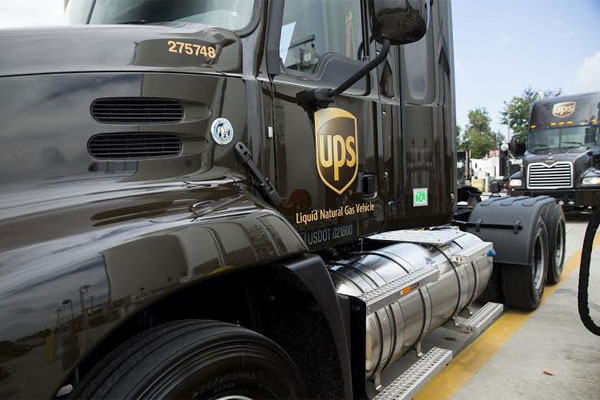
UPS triples annual number of miles driven
DUBAI, August 2, 2015
UPS, a global leader in logistics, logged 154 million miles (248 million km) in 2014, marking a nearly three-fold increase from the distance recorded in the previous year, toward its goal of driving one billion miles by the end of 2017.
UPS today (August 2) released its 13th annual Sustainability Report, highlighting its growing investment in alternative fuel and advanced technology vehicles and commitment to log 20 million hours of volunteer time by the end of 2020.
With its “Rolling Laboratory” approach, UPS accelerated its investment in an alternative fuel and advanced technology fleet of more than 5,000 vehicles last year, increasing the number of vehicles by 61 per cent over 2013 and adding 1,100 natural gas vehicles.
“It took 13 years to drive the first 350 million miles with our alternative fuel and advanced technology fleet,” said Jean-François Condamine, UPS president Indian Subcontinent, Middle East and Africa (ISMEA).
“In just one year we were able to build dramatically on that number and we are now more than halfway to our 2017 goal. With continued investments in this fleet, we are doing our part to help transform the transportation industry.”
UPS reported that 5.4 per cent – or 25 million gallons – of its total gas and diesel purchased in 2014 was displaced with alternative fuels including natural gas, propane, ethanol, biomethane, renewable diesel, and electricity. The commitment to alternative fuel and advanced technologies will allow UPS to reduce its annual use of gasoline and diesel 12 per cent by the end of 2017.
The report also highlights two global trends facing the transportation and logistics industry: an increase in consumer e-commerce and growth in urbanization.
E-commerce shipments are typically business-to-consumer (B2C) and fewer packages per stop, compared to business-to-business (B2B) deliveries. This means carriers may be driving more miles and using more fuel to deliver fewer goods.
While e-commerce drove a 6.8 per cent increase in package volume globally in 2014, UPS emitted fewer greenhouse gas (GHG) emissions per package, with total carbon emissions growing just 3.3 per cent. The 14.1 per cent reduction in carbon intensity achieved since 2007 is equal to removing more than 380,000 passenger vehicles from the road for one year, it said.
With consumer deliveries expected to grow to half of UPS’s US business volume by 2019, the company deploys innovative strategies and technologies to address this challenge, including the Orion routing system, UPS My Choice service and UPS Access Point locations. These services give consumers control over when and where they receive deliveries, which helps UPS avoid unnecessary miles, it said.







